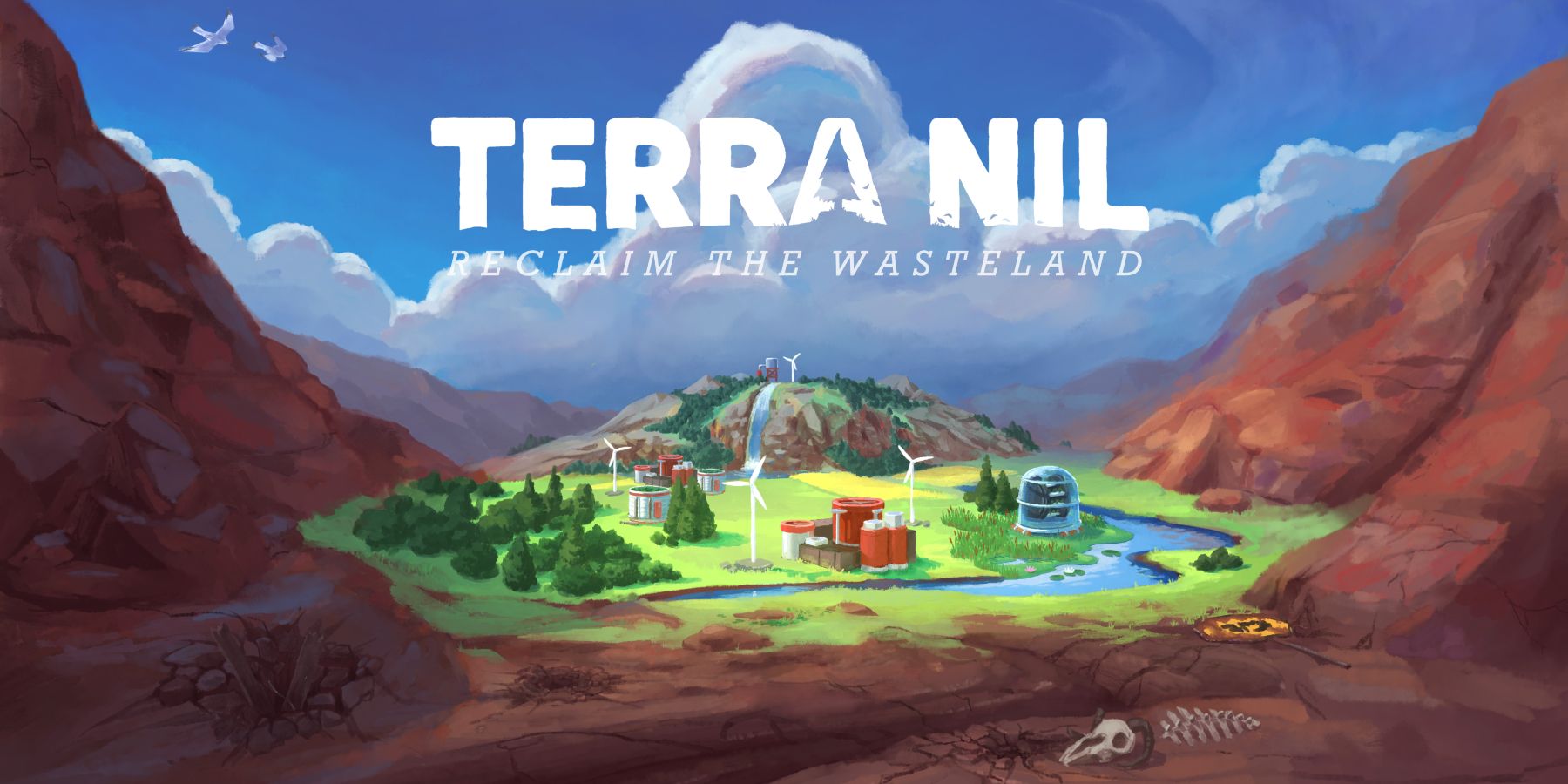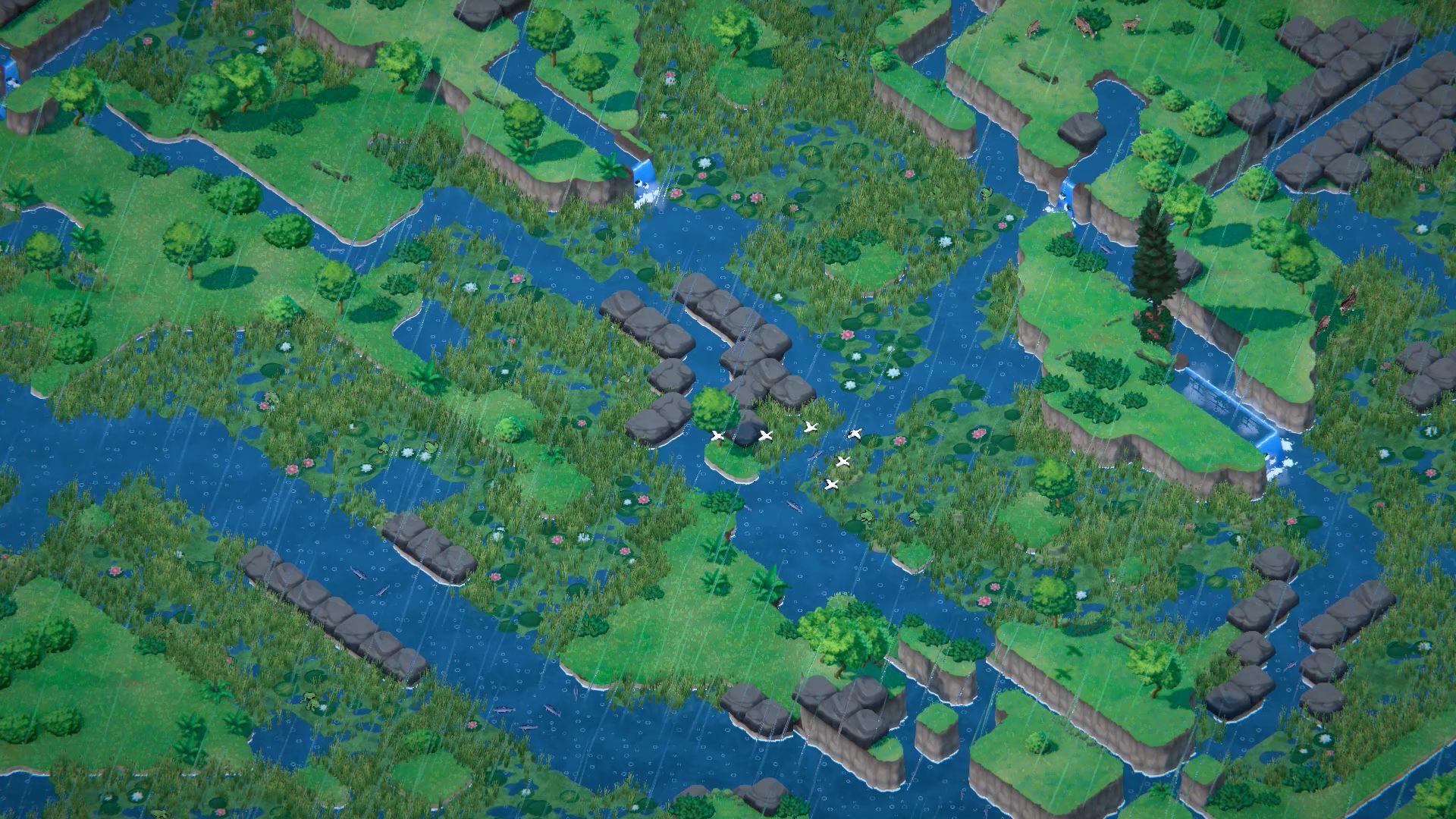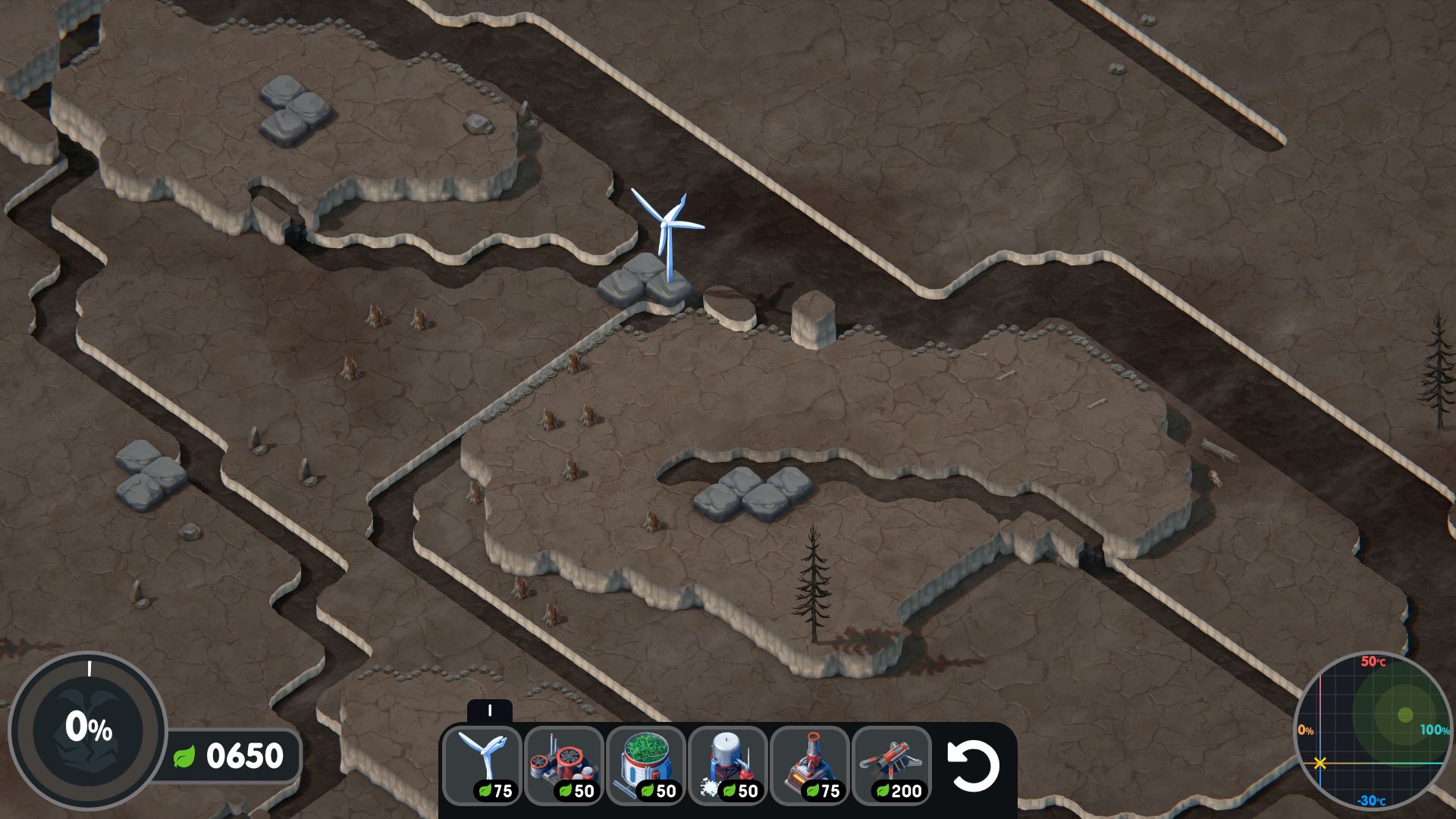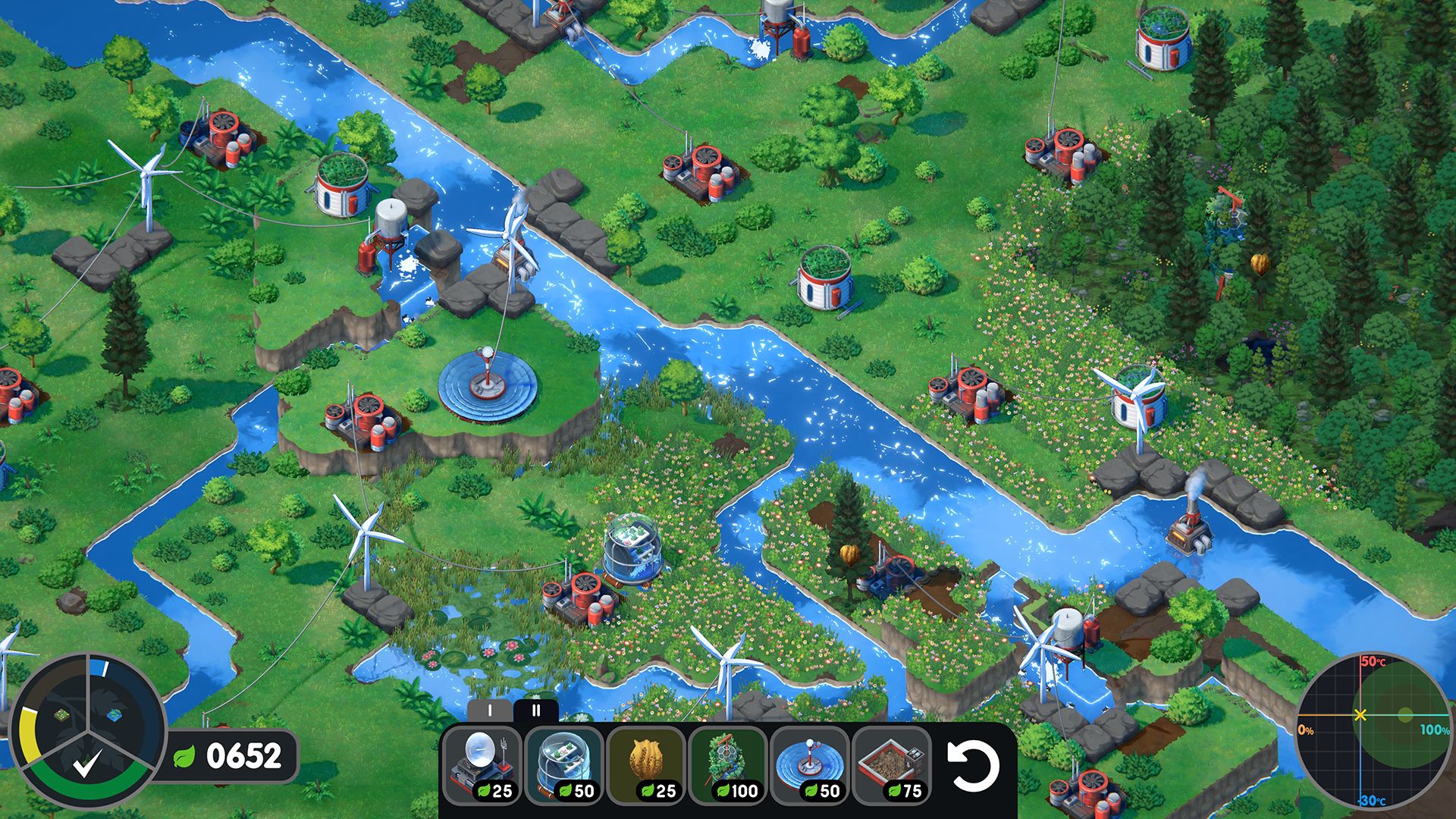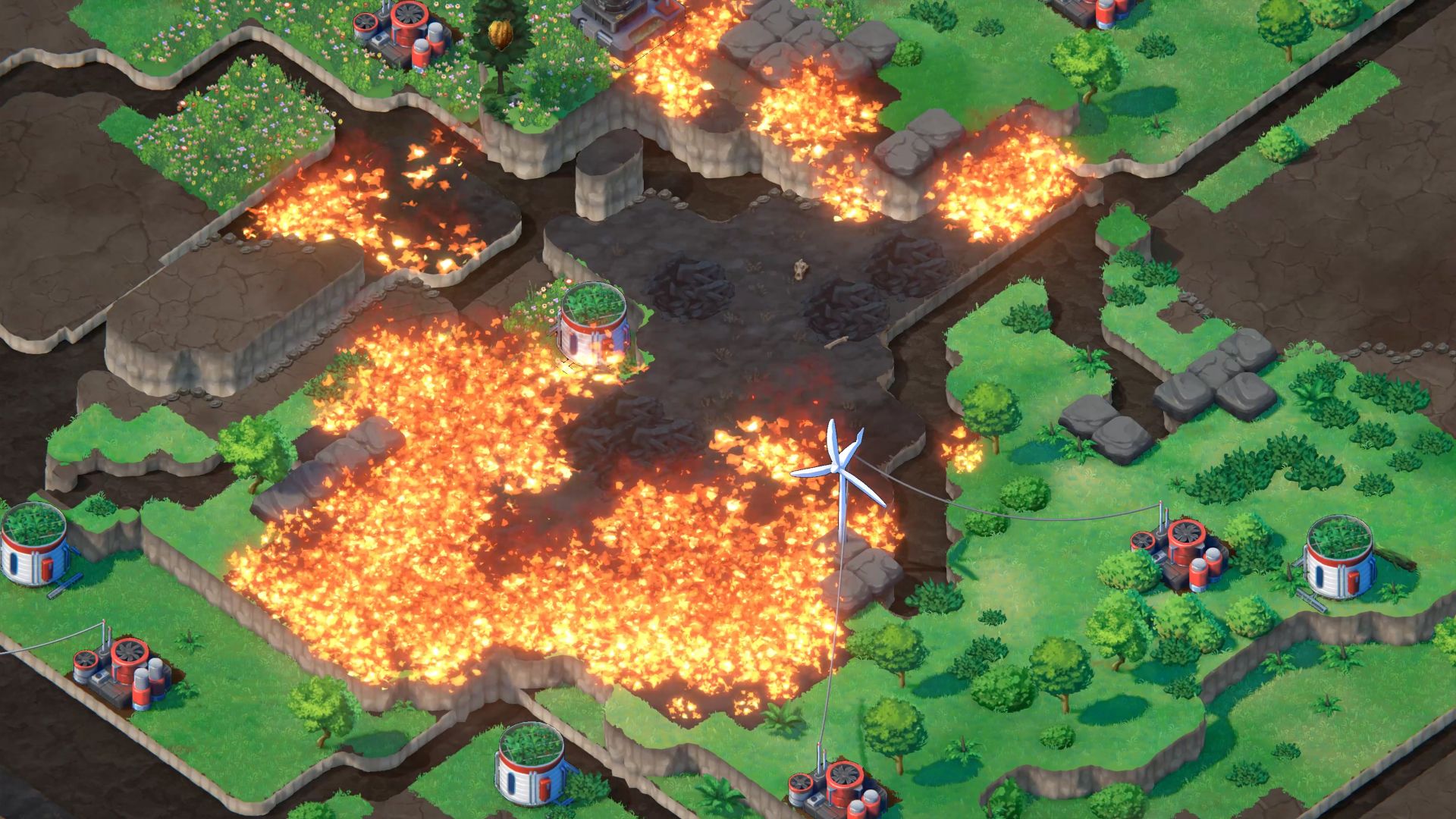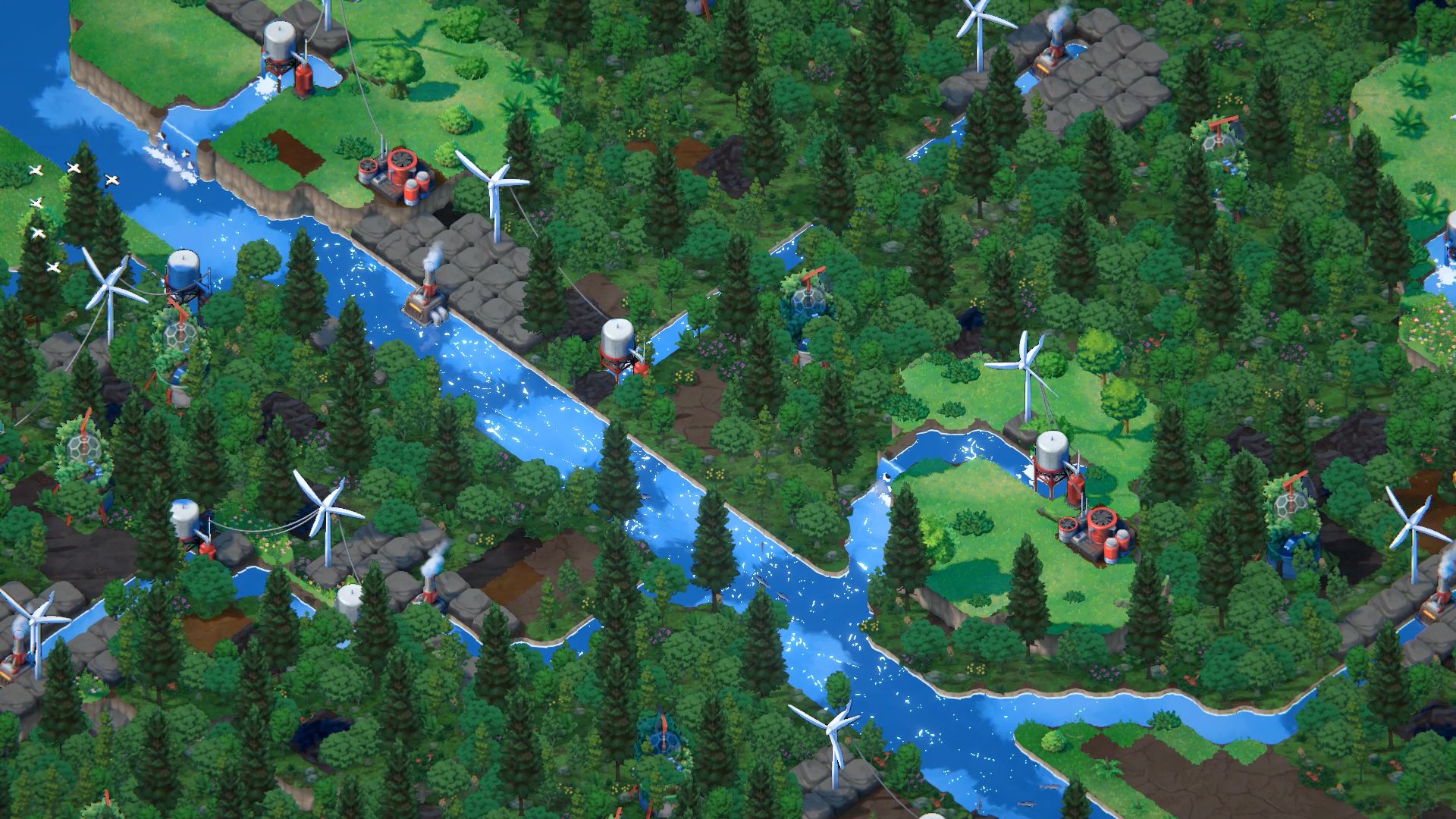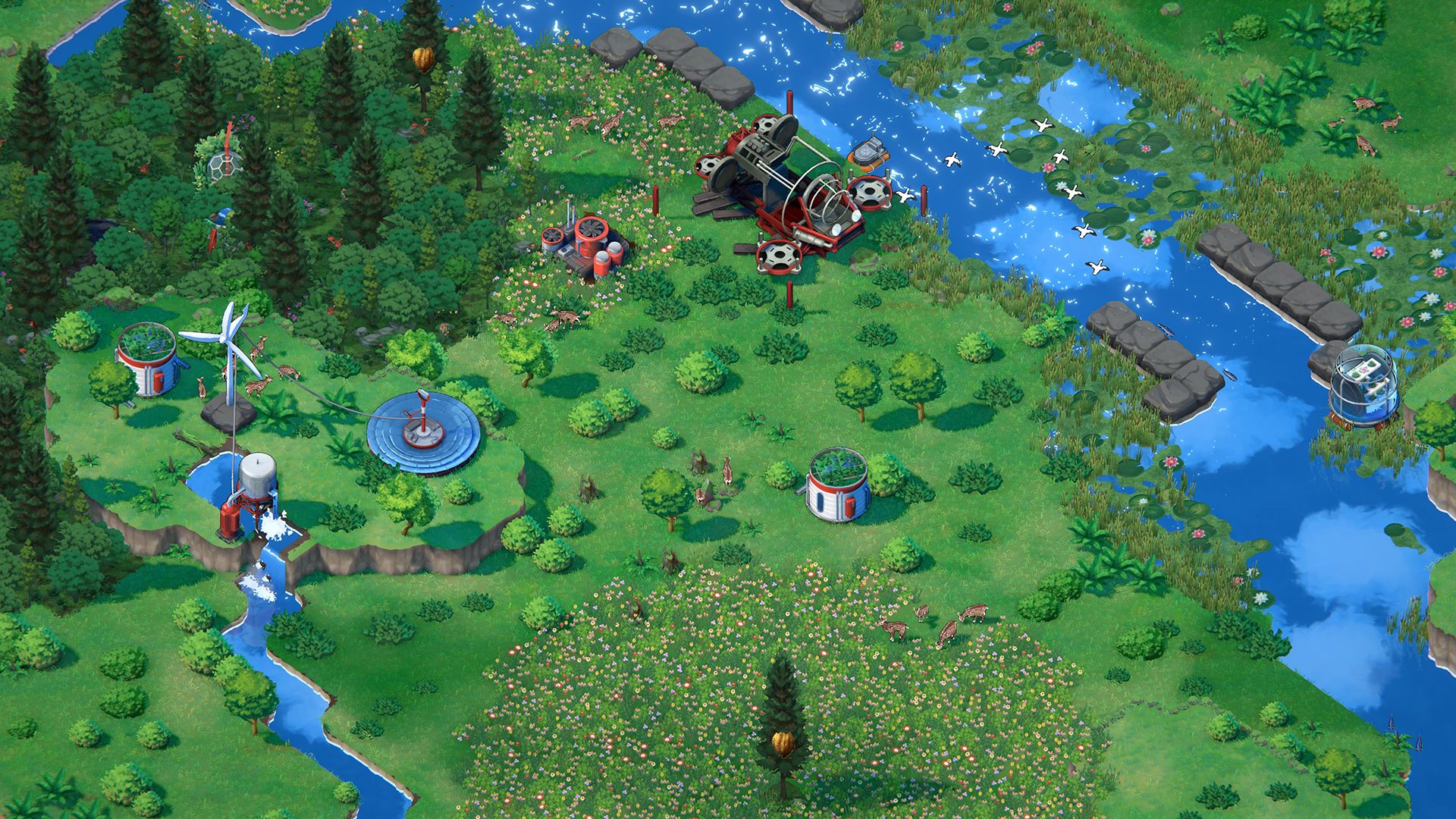Looking at the catalog of South African indie studio Free Lives shows a rather eclectic mix of games: Broforce, GORN, Cricket Through the Ages, and Genital Jousting among its previous titles, with four more currently in development. Broforce Forever, Anger Foot, and Stick it to the Stickman are all relatively similar in their sometimes-hyper violent goals, which makes Terra Nil stand apart. Even without this distinction, the game has captured plenty of hearts ahead of its spring 2023 launch.
Game Rant spoke to Free Lives developer Jonathan Hau-Yoon, who serves as lead artist on Terra Nil, about the studio's approach to designing games and why the natural beauty on display in this "reverse city builder" strikes a chord as publisher Devolver Digital releases its latest "Satisfaction in Reclamation" trailer. The following Interview has been edited for clarity and brevity.
Q: I understand Terra Nil started as a separate "hobby project" before Free Lives. Was the intent always to go from a prototype to a more fleshed-out idea?
A: Sam Alfred made Terra Nil for a Ludum Dare jam. The jam’s theme was “Start with Nothing,” and the title he made that weekend was the first tier of the current game. The game scored very well, being awarded 1st in Graphics and 4th in Mood and Overall. At the time he had been hired to work on a Broforce update, but the positive feedback Terra Nil had received encouraged him to continue working on it after hours. If the game hadn’t scored well in the competition, I think Sam would simply have made more jam games until one of them did.
I think the hope is always that something you make shows enough promise to warrant becoming a full commercial title, but starting a jam or prototype with that intent can put enormous pressure on yourself and hamstring you creatively. I think that approaching game jams and prototyping with playfulness and lower pressure is important for a healthy mindset, as well as a higher chance of creative success.
Q: Is this how every project at Free Lives got its start, being a separate kind of idea pulled into a larger team? I notice there's an option for other South African devs to "pitch your game" on Free Lives' website.
A: Every one of Free Lives’ games began at a jam. Game jams allow for these short, focused bursts of creativity to try out new ideas, or new implementations and iterations on past attempts. Sometimes we use game jams to test the wings of something we’re already passionate about. Sometimes we use them to play with a particular tool or learn a new skill. Many of our game jams would not be considered candidates for commercial projects, but they might spark other ideas. As long as the time investment is low it makes sense to try them out. We only commit resources to those that show evidence of promise: scoring well in a competitive jam, having numerous downloads or community engagement, or getting picked up by streamers and press. We haven’t jammed as much recently, having multiple separate projects in development simultaneously, but it’s still a process that I think has shown to be effective.
This is the general process we go through internally, but we have been involved in trying to enable other local developers to participate in this process too. Free Lives has funded external developers in the past to help them build a public prototype to test commercial viability. It’s something that I believe we still continue to do, but that’s a separate arm of the studio, and I’m not familiar with those details.
Q: This has led to a seeming disparity in the theme and style of the studio's output (Broforce, Genital Jousting, Terra Nil). Do you see that diversity as a strength?
A: Making multiple sequels to already-successful IPs certainly sounds smart: the skill that we developed working on the previous game would more directly contribute to the sequel, and being a known brand would help with marketing efforts.
At Free Lives, when it comes to working on our next game, the only real limitations we have are that there's some evidence many people are interested in the idea (e.g. number of downloads); that we have access to the skills required for the game - preferably internally, where colleagues both like the idea and actually have the desire to work on it; and that the scope of the game is appropriate for a conservative estimate of sales by studying similar games.
With that in mind, it makes sense that as new folks join the team, or our interests change and evolve as we gain more life experience, the kinds of games we make also change. If we’re working on the things that genuinely interest us, we’re more likely to enjoy our work and create more compelling experiences. I don’t think we’re aiming for a diverse portfolio of games so much as we have the freedom to test out ideas, while working within our limitations as a relatively small studio.
Q: I've talked to other studios who feel branding is paramount, and releasing vastly different projects might alienate or confuse fans. Is that something Free Lives has considered?
A: Yes. You might notice that Terra Nil has its own Twitter account, whereas the rest of Free Lives’ games get tweeted about from the main account.
I don’t personally think branding in itself is something to worry about. If you’re a small indie game studio with limited resources, I’d argue that it’s more important to focus that energy into making really compelling games than on brand identity. My feeling is that branding can help push a borderline successful game into profitability, but if we’re not really interested in working on things that would only be borderline successful anyway.
One of the things we do when we post our game prototypes to itch.io is we use our own personal (and relatively anonymous) accounts rather than a shared studio account. If the game does well as a free prototype, the hope is it does so on its own merits, not because Free Lives has artificially inflated download numbers by throwing its weight behind it. If it still draws numbers, it would seem there’s genuine interest regardless of any studio branding. But I say this as a game developer, and not a marketer. If I think about marketing, I think about solving the marketing problem with game development: making games that sell themselves, designing moments that would show well in a GIF or a short video, creating experiences that someone would want to tell their friends about organically.
And I do think it’s good to manage peoples’ expectations. In the case of the separate Twitter accounts, it makes sense that some of the players who love Terra Nil and want to see the game’s news may not want to see the more violent content we have in GORN or Anger Foot. But I think of that as less of a branding problem so much as it is wanting to be considerate to our players and community.
Q: In a related note, how many people are working on Terra Nil versus other projects like Broforce Forever? How big is the total workforce at Free Lives, and how do you sustain multiple ongoing developments?
A: We’re somewhere around 15 developers, and around 25 staff in total. Terra Nil was one-to-three people full time for two years, but reached around eight in the past year (including part-time and contractors). With the bulk of the work having been completed, we’re back down to about three for bug fixing and polish. I think those numbers are pretty typical for most of our projects, where an initial smaller team works on something to lay some groundwork and explore a game’s potential, and then more folks join to help with the workload as it becomes clear what it actually involves.
A: I previously spoke with Coffee Stain Studios about Satisfactory, which I understand had a similar origin to Terra Nil. They said the original pitch was "we can do [Factorio], but with our own spin." Why do you feel this style of game strikes a chord with so many?
A: City builder games have a naturally compelling game loop. It’s very satisfying to see a complex production line you’ve built working with ever-increasing efficiency, or visually see the diegetic progress bar that is your city covering a map. There’s also a very satisfying feeling of zooming out and seeing all the little elements you’ve created working away, similar to that of watching an ant colony.
Terra Nil uses some of these elements, but also subverts them. For example, you do build buildings, but your main goal is to cover the map in life, diverse biomes and animals, and you even have to pack up and recycle your buildings afterwards. Instead of expanding endlessly, the game gives you a limited amount of room to build. The world has limited land, and how we use it and give each biome its place is important.
Q: At that, Terra Nil's spin on the genre takes inspiration from real-world ecological disasters around South Africa, right? How much of this was "write what you know" versus a genuine desire to inspire change?
A: I think Terra Nil arguably takes more inspiration from South Africa being a country that is rich in natural beauty and diversity, where we grow up with the Big Five on our bank notes and have hiking trails and game reserves dotted around. That isn’t to say that the climate crisis isn’t also relevant, but I think that our attitude toward the design of the game is more to show a love for nature and a desire to care for it, protect it, and help it grow and flourish.
I think that when we’re surrounded by news of climate catastrophes, or post-apocalyptic, dystopian visions of the future, it becomes easy to fall into apathy and think of a gloomy future as being inevitable. Instead, we give players agency to pull them out of despondency. A desolate wasteland? The tools to change it are within your grasp. We calm them with gentle, delicate music and lush, beautiful art. We try to lean more into how full of wonder and beauty nature is, that it’s worth caring for and preserving. That’s something we are very genuine about. If it inspires change, then all the better.
Q: Terra Nil has been showcased a few times at events like Steam Next Fest; it's hugely wishlisted by prospective players and generally praised by media/content creators. How has that support felt, both for the effort going in and its underlying environmentalism?
A: The coverage has been great for giving us more confidence in the game. As I said before, our development process is typically one of testing regularly with our player base and getting feedback to make sure we’re still on the right track. But there’s always a bit of fear that somehow our sample size was skewed, or that we might have veered in the wrong direction. Even when the press does pick it up, there’s sometimes a bit of doubt - are we being interviewed because they genuinely like the game, or are we just being topical because of climate change? They’re not unrelated of course; making a game about something topical is certainly one way to connect with an audience, provided that it’s still topical at the end of a development cycle.
But the most touching thing for me is reading tweets from people who’ve said that playing the game unexpectedly brought them to tears. There was someone who mentioned on Twitter that when the rains hit, something broke through their depression, and that they’d cried for the first time in a long time. I really think that there’s something cathartic about caring for nature. Yes, restoring and preserving the environment is good for us, for cleaner land, air and water, and for curtailing climate disasters. But - and this is going to sound terribly cheesy, but I do believe it - I think it restores something within us too.
Q: Do you feel any kind of additional pressure to live up to that expectation? Hype can be a double-edged sword.
A: There’s some pressure, certainly. I think there’s a lot you can get away with as a smaller game. It’s okay to be a bit rough around the edges. But with hundreds of thousands of players, relatively rare issues can look a lot more common, and polish becomes more important. On aggregate though, it’s far better to know so many people want the game; it would be so much worse to put all of this work into something that nobody wanted.
Q: How are you feeling now that the game is officially approaching launch? Is there a lot left to do?
A: The core game is done, but there’s still a lot keeping us busy. There’s the launch trailer, assets for Steam achievements, trading cards, emotes, putting together assets, and responding to any issues that pop up in QA. Free Lives has also been exploring collaborating with an organization that does environmental work to see if we can donate toward their efforts. Having Terra Nil be able to contribute more tangibly toward protecting wildlife and fighting climate change would be so satisfying!
Q: Tell me a little about the decision to work with Netflix on mobile distribution, where did that partnership come from?
A: We originally planned for Terra Nil to be a PC, Mac, and Linux title. When Devolver Digital approached us with the opportunity to have a mobile version on Netflix Games, we were excited. As much as I primarily play games on PC, the mobile games market is significant, and it is very exciting that more people will have the opportunity to play Terra Nil.
Q: Has it been difficult translating the game to a touchscreen format?
A: The biggest challenge has been the UI, and presenting information we want to on a small screen. This has been compounded by localizing the game into many different languages. But again, having many more players being able to play Terra Nil (in their own language) is exciting! It’s great that Devolver Digital and Netflix have made this possible.
Q: How much support have you received on porting? Does it maybe inspire you to look at further console ports, or are there different plans regarding what's next for the Terra Nil team?
A: We have been fortunate to work with 24 Bit Games, another South African studio that has done ports of some of our previous games (including Broforce and GORN). They’re experts at various mobile limitations and concerns, a skill that Free Lives hasn’t really honed. We’ve chatted about console ports, but there’s nothing concrete in terms of plans for that.
After launch, we’ll likely be keeping an eye on various streams and threads, looking out for issues players have which we can fix. There are also some extras we’d like that we didn’t get around to, like controller support. But I’m also personally looking forward to taking a bit of a break, and spending some more time outdoors and doing some restoration myself.
[END]
Terra Nil releases spring 2023 for Mobile and PC.

